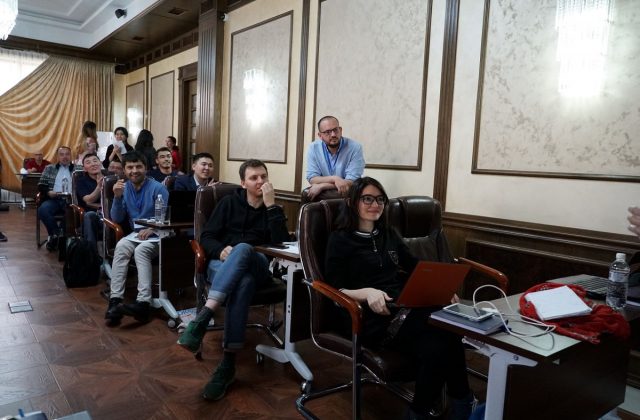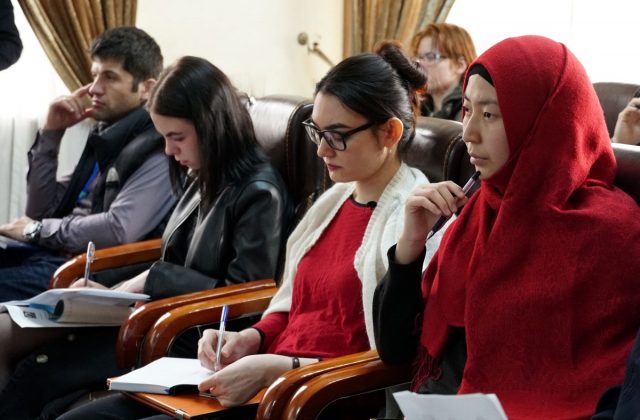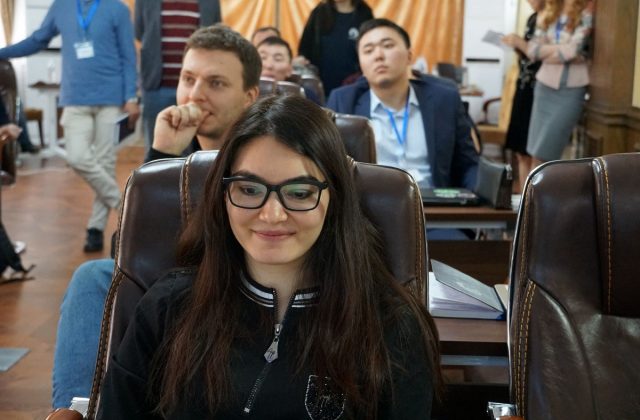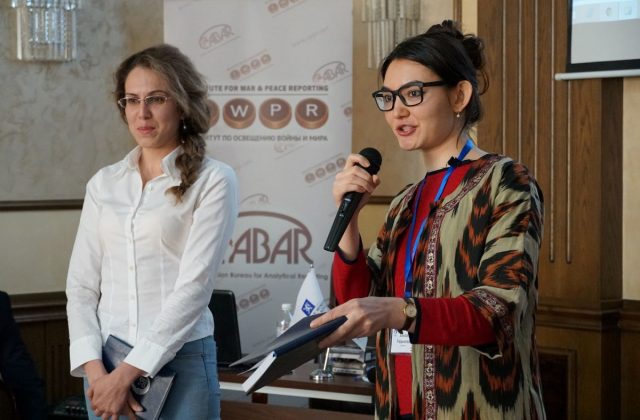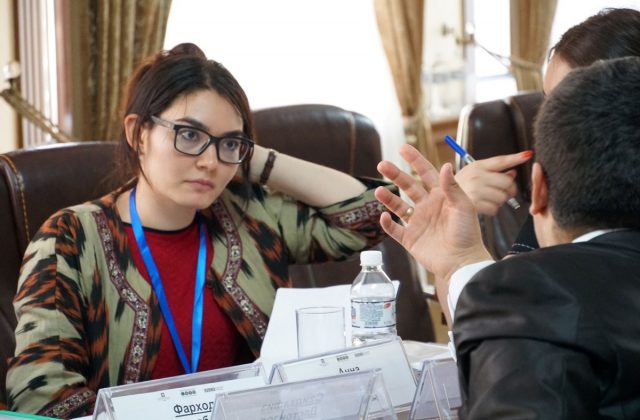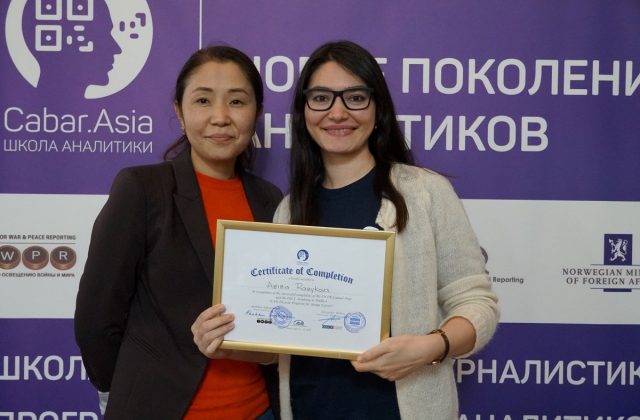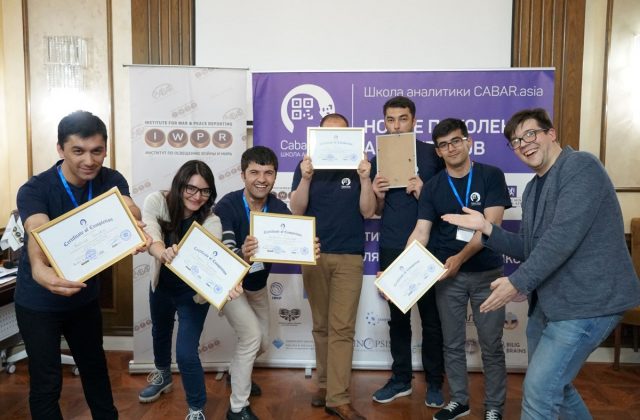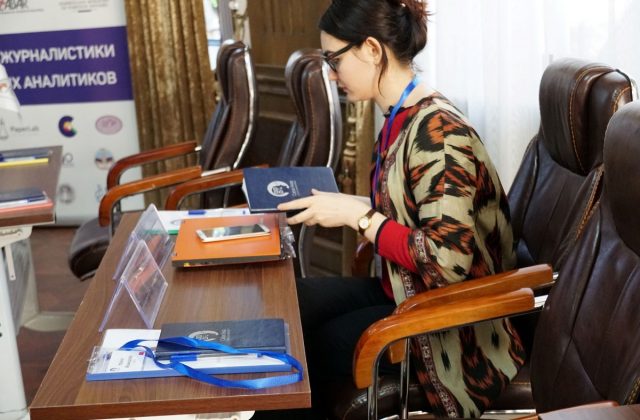Now we will be able to correctly use this knowledge to create quality analytical product available to a large audience.
Follow us on LinkedIn
Despite the experience of writing scientific (academic) articles before participating in the School, I had to deal with real analytics during the final selection of program participants. Just then we received our first task; to write a full-fledged analytical article in conditions of limited time and quantity of primary material.
The program of the Second cabar.asia School of Analytics lasted one week of fruitful training and working days (from April 15 to April 21, 2019), when the participants were involved in active participation in discussions, and the trainers skillfully alternated theoretical with practical material.
Day one started with an elementary question “who is the analyst, and what does he do, what tasks he has, why do we need analytics at all?”, and numerous answers and opinions on this issue by the common efforts of participants and experts. The day was remembered by vivid presentations by participants from Central Asian countries, trainers’ overview presentations on errors made in writing analytical articles, on the departments involved in data analysis, and methods for developing analytical material. From the first day, young analysts learned to value every school minute. Along with discussions on agenda issues, the exchange of views continued during lunch.
Day two left a lot of impressions and pleasant aftertaste from the speeches of two instructors from Kazakhstan, real professionals in their field – Askar Nursha and Rustam Burnashev. The first one shared his valuable experience of the delicacy of analyst’s work in public institutions and the secrets of a correct and timely statement of requirements for the development of successful relations between a customer and producer. The second expert analyzed in detail the structure of analytical articles in an interactive format for presenting the information.
Day three began with Timur Toktonaliev’s presentation on the rules of the material presentation, the differences between the printed article and the online edition, and the audience’s perception of the product of the cabar.asia platform. The material analysis by the participants, divided into groups, in order to identify obvious problems in the narration and its further solution is especially remembered.
In the afternoon, there was a smooth transition from a presentation to a meeting of young analysts with experts on joint research of the Central Asian countries. The experts answered topical questions that civil society is concerned with. The possibilities of solving problems by joint efforts and the prospects for developing the research potential of educational institutions were also discussed. The third day ended with a speech by Yuli Yusupov on the impact of his analytical articles on decision-making processes at the state level.
On the fourth day, thanks to an extraordinary presentation of information by Ilya Shepelin about the fight against Fake news, time spines away. I learned for myself, that the main criterion for recognizing “unreliability/distortion” is the comparison of content in different sources, as well as a logical sequence of facts and an accurate statistics understanding.
The day ended with Kakhramon Bakozoda’s presentation on the proper use of applications for quantitative and qualitative data. In the course of his presentation, we carefully checked the structure of questionnaire, which lined up from the development and adjustment the latter to the standards of the focus group being researched, the availability of the questionnaire both for the respondent and the interviewer, the subsequent analysis and data processing in various programs, and even the psychological component identification of the questionnaire (we have not previously thought about it).
Day five began with working in Google forms for creating an online survey. The practical exercise gave participants an understanding of the logical chain significance in question design and to facilitate further work with the collected material.
Roman Vakulchuk’s lecture was devoted to the experience of his work at the Norwegian Institute of International Affairs, where he demonstrated to the school participants an application of a practical approach in work of think-tanks in the West, which are different from the Central Asian ones.
After the main theoretical part of the training, the participants were asked to develop scenarios in relations between China and Central Asian countries. Obviously, a specific approach to acquiring the skills of meta-prediction of events is also an important integral part of the analyst’s work.
The sixth day was the most expectable among the participants. Until that day, I had only a basic understanding of the creation of infographics and data visualization and was more suited to the criteria for the consumer of this product. Thanks to Anastasia Valeeva and Altynai Mambetova, we began a long and fascinating way of exploring such online tools as Datawrapper, Flourish, Google Datastudio, which will further help analysts to present information to the reader in a more comprehensible, intelligible and perceptible form.
In addition to the formal and intensive part of the program, the School of Analytics continued in post-program training, where participants consulted with the editors on the finalization of their “final analytical papers”, were getting prepared for country presentations, and completed assignments for the next classes. It should be noted that one week of classes was clearly not enough for such a volume of interactive training and the amount of received information.
At the same time, I would like to note that now we can correctly use this knowledge to create an author’s analytical product available to a large audience. Probably in the near future, we will achieve the moment when our analytical product will be perceived in higher instances by decision makers for the benefit of the state and for the benefit of civil society, by building up our potential and strengthening our skills.
These kinds of events assume full-fledged networking in the field, but, unfortunately, it is not maintained by participants after the completion of the course. But in our case, there is confidence that the school vector will receive further targeted development. The school has achieved its goal and accomplished its tasks, has prepared a new generation of young analysts, and giving impetus to effective cooperation within the framework of the cabar.asia platform.
Taking this opportunity, I want to sincerely thank:
-The entire IWPR team for their work in organizing a large-scale event, for the patience and support that the team of instructors provided throughout the School;
– The incomparable enthusiastic trainers, who are very different and so interesting, with whom we plan to maintain professional contacts;
– All School participants from the countries of Central Asia – Kazakhstan, Kyrgyzstan, Uzbekistan, Turkmenistan, and Tajikistan, who became close to me in intellect and spirit during the period of study at School;
And wish you all further creative success!




